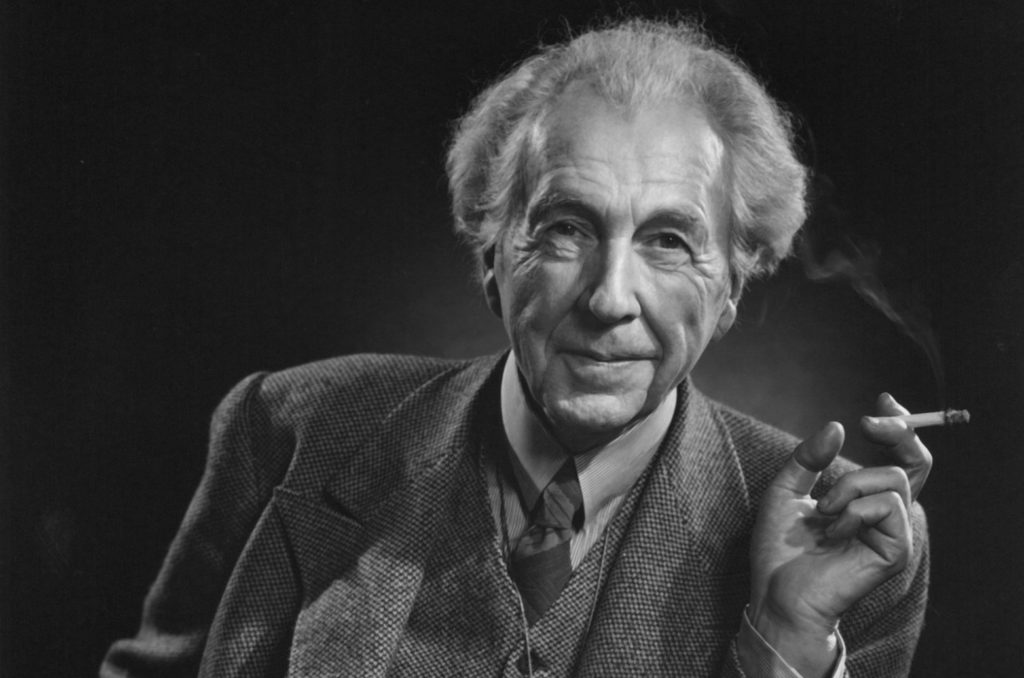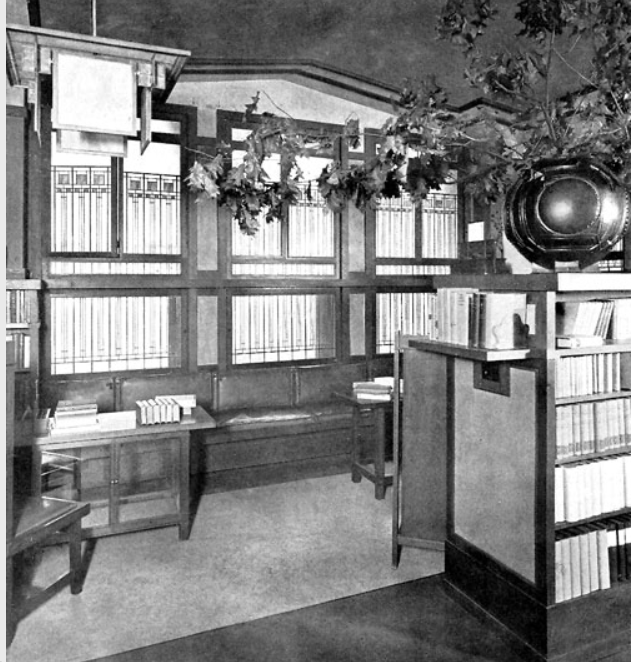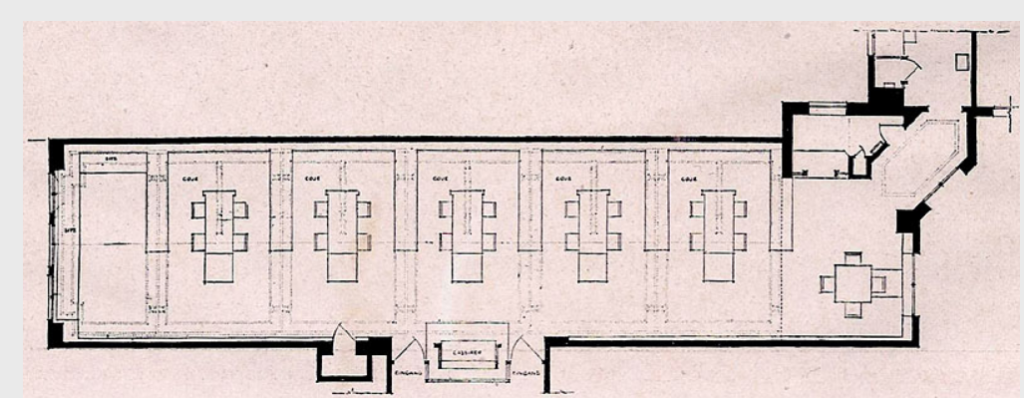In October 1907—a few months after Upton Sinclair’s The Jungle horrified Chicago—a new bookstore opened on the seventh floor of the Fine Arts Building downtown. In her autobiography, Margaret Anderson, the founder and editor of The Little Review, called it “the most beautiful bookshop in the world.” But Browne’s Bookstore survived for only five years. In 1908, a visiting Publishers Weekly reporter may have hit upon why: “Thus far, only one dealer in all classes of books has had the courage to locate his store up ‘in the air.’ ”
“The air” was the seventh floor. The lone dealer was Francis Fisher Browne, the editor of Chicago’s literary magazine du jour, The Dial, whose offices were located on the same floor. At the time, the Fine Arts Building was the center of Chicago arts and culture. Constructed by the Studebaker Company in 1885 to showcase their horse-drawn carriages, the colorful Romanesque building was remodeled a few years later to gather “the artistic, social, and literary concerns of the city into a single building.”
By 1901, it was home to artist studios, theater companies, literary clubs, and more than ten thousand music students. A decade later, it gave birth to Harriet Monroe’s Poetry magazine, Margaret Anderson’s The Little Review, and the Chicago Little Theatre. With thousands of booklovers moving up and down the stairwells every day, a seventh-floor bookstore didn’t seem like such a terrible idea. “All Chicago society came to Browne’s Bookstore,” Anderson writes. “Here tea was served and everyone was very smart.”
Of course, the store’s altitude wasn’t the only reason it gained national attention: every inch of the interior was designed by Frank Lloyd Wright—the shelves, the windows, even the knickknacks.
In 2008, when I moved to Chicago for an M.F.A., my fiction workshops were held in the building next door. Older students were quick to tell me two things about the Fine Arts Building: that a scene in The Time Traveler’s Wife took place in the Artists Café on the ground floor and that Frank Lloyd Wright once worked from an office on the tenth. Both claims checked out, though Wright only worked out of Suite 1080 for a few months in 1908 and 1911.
No one said anything about a bookstore. For the most part, I forgot about the building until this past December, when The Dial Bookshop opened on the second floor. In her article on the long-dead Dial’s new namesake, Aimee Levitt casually mentions Browne’s Bookstore and links to a relatively sparse record at the Frank Lloyd Wright Trust. Even though most of Wright’s works have been obsessively catalogued by scholars, information on Browne’s Bookstore was difficult to find. From a website that sells windows and lamp patterns modeled on Wright’s I gleaned that for the bookstore, Wright had replicated the windows he used for the children’s playroom in his home. A clearer picture started to emerge only after I searched through scans of century-old newspapers, flipped through out-of-print memoirs, and made a trek to the Fine Arts Building myself.
Here’s what I know. Wright met Browne through the Caxton Club, a group of wealthy Chicagoans dedicated to publishing books in the Arts and Crafts style. Like everything else back then, the club was headquartered in the Fine Arts Building, a few floors above Browne’s offices for The Dial. Having designed book covers for the club’s special editions since 1898, Wright was invited to design Browne’s Bookstore.
When he took on the project in 1906, Wright was thirty-nine years old and already well-known among Chicago’s elite, but he was not a celebrity by any means. He was also in the middle of a secret affair that would end his marriage. “Those years between 1904 and 1909 were to be pivotal in Wright’s life,” Meryle Secrest writes in Frank Lloyd Wright: A Biography. Before that period, Wright was a Midwestern family man who built lavish suburban homes. Afterward, he abandoned his family (including six children) in Oak Park and fled to Europe with his mistress (who was also his neighbor’s wife). When he returned to the States a few months later, he became an international figure who tackled grand public projects from Manhattan to Tokyo.
But back to the bookstore, which opened right in the middle of Wright’s slow-motion midlife crisis. The L-shaped retail space occupied the southeastern corner of the seventh floor, “looking into the lake at one end and, at the other, into the shaded Italian inner court from which tinkled always the sound of pianos … and a fountain,” according to Anderson. Browne and Wright “sought to combine the best features of a well-equipped bookstore with those of a choice home library,” Publishers Weekly writes, and to that end, there were no freestanding shelves.
The main room was split into six alcoves: five with reading tables and Wright’s trademark high-backed chairs and one by the window with couches (the far left-hand side of the floor plan below). The smaller, snaking room on the far right—“long, dark, reposing, with an enormous fireplace and great armchairs”—was an event space that also housed Browne’s rare bindings. The Dial’s offices were adjacent to this side of the store.
“Every fixture and every piece of furniture in both rooms has been specially designed and manufactured to order,” Publishers Weekly writes in 1908. “The cases, tables, chairs, and wall trimmings are of quartered oak throughout.” Photos show that among the shelves, there was a replica of the Louvre’s Winged Victory statue, a copper urn, and tall narrow “weed holders” that Wright often used to showcase prairie grasses. “Not satisfied with the bric-a-brac of the day, Father designed his own,” says Wright’s second-born son, John Lloyd Wright, who invented Lincoln Logs in 1916. “Father liked weeds!”
When Margaret Anderson moved to Chicago in the summer of 1908, Browne hired her as the shop’s book clerk. A few months later, Browne asked her to help out next door at The Dial, where she was “initiated into the secrets of the printing room—composition (monotype and linotype), proofreading, make-up.” She became Browne’s “chief assistant” but quit both jobs in the summer of 1909 when Browne “one day had been moved to kiss me. He was full of sincere and touching apologies the next day, but I was as sincerely displeased as he was contrite.” It’s worth mentioning that Browne was sixty-five and Anderson twenty-two, he was married with adult children, and she was a lesbian. A few years later, in 1914, Anderson returned to the Fine Arts Building and founded The Little Review. At that point, The Dial was still there—but Browne was dead, and Browne’s Bookstore was two years gone.
The Fine Arts Building still stands at 410 S. Michigan Avenue. Some of the interiors look much the same as they did a century ago: the marble lobby, the restored Studebaker Theatre, the Art Nouveau murals, the hidden Venetian Court. But if you walk up to the seventh floor—or take Chicago’s last remaining human-operated elevator—no trace of Frank Lloyd Wright remains. Browne relocated the bookstore to the ground floor in 1910, then closed it two years later. Around the same time, the Fine Arts Building completely remodeled the original space. Now it houses an interior architecture and design firm between plain plastered walls. But even today, when you walk the hallways and climb the stairs—still tinkling and humming with the music of hidden pianos and violins, still straining Midwestern light through its skylights —it’s easy to see what drew the architects of Chicago’s first literary renaissance to this city within a city by the lake.
Adam Morgan is the editor in chief of the Chicago Review of Books, a contributing writer at Chicago magazine, and a book critic at the Minneapolis Star Tribune.
from The Paris Review http://ift.tt/2DKmwVn



Comments
Post a Comment